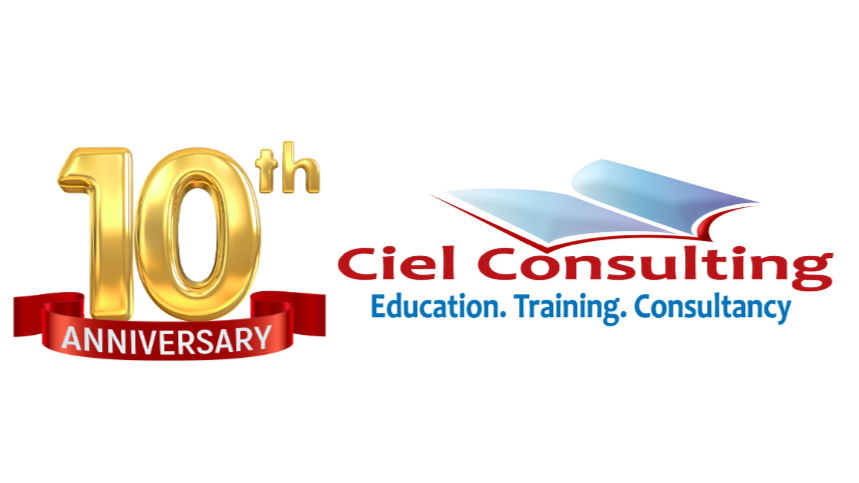
Complete MS Project Training: Beginner to Advanced
OPTION 1: PHYSICAL CLASSROOM LEARNING
Training Fee:
₦200,000
₦99,000
- 5 Days Intensive Training (Weekday & Weekend)s
- 100% Money back guarantee
- MS Project Software will be installed
- Practice Projects
- MS Project Manual
- Real-life examples
- Certificate of completion
OPTION 2: ONLINE SELF-PACED LEARNING
Training Fee: ₦50,000
- Lifetime access to our e-learning content
- Videos explaining each topic
- Industry-based scenarios
- Hands-on projects
- 24x7 learner assistance and support
- Certificate of completion
- MS Project Software
OPTION 3: ONLINE INSTRUCTOR-LED CLASS
Training Fee: ₦200,000
-
Includes Everything in Self-Paced Learning PLUS:
- An instructor-led online training class over Zoom/Google Meet
- One to one mentorship for doubt resolution
- Lifetime access to the recorded video session
- 24x7 learner assistance and support
- 5 days of intensive training
- Certificate of completion
FAQs
-
Microsoft® Project 2013 application is a registered product of Microsoft ® Corporation. It is a useful desktop tool that helps project managers to analyze and plan project resources, budgets, and schedules. Project managers can efficiently track the project progress and forecast resource needs with the help of reports.
Currently, there are approximately 6.5 thousand professionals across the globe who are Microsoft Certified Professional Developer (MCPD).
-
Microsoft Project 2016 helps in managing projects efficiently. This is one of the most sought applications for professional project management.
Ciel’s training in Microsoft Project 2016 offers the following benefits:
Manage projects using the Microsoft® Project 2016 application
Manage resources and assignments within a project
Track the project progress using various features
Create a task-based schedule for the project
Share project information
-
All professionals who manage projects should do this course. This course will help them in better management of their projects through Microsoft project 2013. Managers, schedulers and others who are using this tool to manage their project should also do this course and get certified to increase their efficiency.
-
Module 1: Introduction to Microsoft Project
This module provides an overview of how the features of Project relate to the job of the project manager. The module also teaches the student how to access different features by navigating through the ribbon.
Lessons
Describe how Project relates to the discipline of Project management.
Learn what the new features are in Project 2016.
Navigate to the primary views available using the Ribbon.
Choose Views that display task, resource, or assignment information.
Select table within views to change the information that is available to see and edit.
Relate the features of Project to the 5 steps for building a plan in Project.
Module 2: A Quick and Easy Overview of Managing with Project
This module demonstrates the required steps to create and use Microsoft Project 2016 through the life cycle of a project.
Lessons
Create a new project and prepare it for data entry.
Enter project tasks.
Sequence the tasks.
Define resources.
Estimate Task duration and assign resources.
Baseline the project.
Track project progress.
Learn how to create a project plan from a template.
Learn how to turn off the timeline.
Learn how to change the project start date.
Learn how to add holidays to the company calendar.
Learn how to add resources and their cost.
Learn how to switch views.
Learn how to insert summary tasks.
Learn how to link tasks and summary tasks.
Module 3: Setting Up a Project
This module explains how to create a new project and establish the basic constraints that Microsoft Project 2016 will use for its calculations.
Lessons
Use multiple methods to create a new project from an Excel file and a SharePoint Tasks list.
Establish one or more calendars to constrain resource availability.
Configure Project to calculate the schedule from the Start Date forward, or from the Finish Date b
Learn how to add Holidays to the company calendar.
Learn how to make a custom calendar.
Learn how to set the Project Start date.
Learn how to set constraints.
Module 4: Manually Schedule vs. Auto Schedule
This module explains how to how to manually schedule project tasks and how to leverage the auto schedule feature.
Lessons
Students practice switching tasks between Manually Schedule and Auto Schedule modes. By switching
Describe which project functions are turned off for tasks using Manually Schedule mode.
Change the task mode from Manually Schedule to Auto Schedule and back.
Identify tasks that are in Manually Schedule mode by the task mode column and shape on the Gantt c
Describe situations that are particularly appropriate for using Manually Schedule.
Describe the limitations that a user must be aware of when using Manually Schedule mode.
Module 5: Creating a Work Breakdown Structure
This module explains how to create a useful work breakdown structure and enter it into Microsoft Project.
Lessons
Build and use summary and subordinate tasks.
Understand and use milestones.
Develop WBS Outlines.
Assign completion criteria.
Evaluate the WBS.
Understand and use WBS templates.
Manipulate a WBS
Learn how to create and manipulate WBS
Learn how to utilize an Outline
Learn how to create notes within tasks
Learn how to utilize an Outline
Supporting the Project Plan
Learn how to hyperlink project artifacts to your project plan.
Learn how to create reoccurring tasks
Module 6: Identifying Task Relationships
This module explains the rules for establishing dependency links between tasks and how to use Project to display these dependencies
Lessons
Understand the different types of task relationships
Understand and use various methods to create relationships
Determine and display task sequence
Understand and use lag, lead, and delay
Understand the new feature of Task Paths
Display the sequence
Identify the different ways to create dependent relationships
Format a Network diagram
Modifying dependency lines
Modifying items to be shown on the critical path
Module 7: Defining Resources within Project
This module explains how to enter resources and specific resource information in Microsoft Project and assign resources to specific tasks
Lessons
Define resource types
Define individual resources that will be used on the project
Record the cost (s) of using each type of resource
Record the limit of availability for each type of resource by establishing a resource calendar and d
Resource Calendar and Availability
Add holidays to a standard calendar
Applying different types of calendars to a project and analyzing the impact to the project schedule
Applying vacation schedules to the calendar
Replace resources based upon the resource’s calendar
Module 8: Making Work Package Estimates
This module explains how Microsoft Project calculates task duration, task work (effort) and task resources. Students will be able to choose among three task types as they enter task estimates and they will know which task type is appropriate for the type of estimate they are making
Lessons
Enter estimates for duration and costs for each task
Distinguish between task types and describe when each is appropriate
Describe the relationship between work, units, and duration
Describe the way Effort Driven scheduling is affected by work, units, and duration
Assign tasks to resources using the Team Planner view
Work, Duration and Labor
Analyze the impact of duration, work, and labor
Create material resources and assigning cost to the resource
Understand how to leverage Project statistics
Apply a material resource to a task and examine the impact to project costs
Module 9: Creating an Initial Schedule
This module explains how Project calculates a schedule based on task relationships and task duration. Students will understand the purpose of identifying critical path tasks and will be able to identify schedule float within the project.
Lessons
Calculate float and identify a project’s critical path
Understand and identify task constraints
Create milestones
Use the Task Inspector to troubleshoot the initial schedule
Reviewing changes that can have a positive or negative impact on the project plan
Module 10: Create a Resource Leveled Schedule
This module explains how over-allocated resources create unrealistic schedules and shows methods for rescheduling in order to create a realistic schedule based on resource availability
Lessons
Adjust a project schedule to account for limited people and other resources
View the overall cost and schedule of a project
Identify resources that have been overallocated for a project schedule
Module 10: Create a Resource Leveled Schedule
This module explains how over-allocated resources create unrealistic schedules and shows methods for rescheduling in order to create a realistic schedule based on resource availability
Lessons
Adjust a project schedule to account for limited people and other resources
View the overall cost and schedule of a project
Identify resources that have been overallocated for a project schedule
Use multiple ways to adjust tasks and assignments to remove over allocation for any resource
Resource Leveling
Evaluate the project’s resource plan using the resource views
Adjust the schedule manually
Adjust the schedule using the leveling feature
Module 11: Managing the Project
This module explains how to use Microsoft Project to control a project. Students will save their plan to a baseline and see how entering actual task performance data enables them to view differences between planned and actual performance
Lessons
Learn how to set a baseline
Lean how to enter and track project performance data
Learn how to apply different tracking methods
Learn how to perform a variance analysis on a project
The Baseline
Use Project Statics to see the changes in a project plan
Use the variance tables to understand the changes in a project plan
Understand the value of baselining.
Baselining & Tracking Performance
Understand the value of Baselining a project
Understand how to Enter Actuals and measuring their impact
Understand how variance is calculated with cost, finish and work
Module 12: Formatting Output and Printing Reports
Participants will be able to control project output by creating and using Custom Fields, Sorting, Filtering, and Grouping of the project data
Lessons
Print
Views
Formats
Sorting
Filtering
Grouping
Custom Fields
Reporting
Other File Formats
Create new fields to group
Create new group fields
Create new views
Create Reports in Project
Learn how to leverage Microsoft Project’s View Report features
Learn how to create a Visual Report
-
Weekdays: 10:00am - 05:00pm (1 Hour Lunch/PM Documentary Break)
Weekend: Saturday 10:00am – 05:00pm; Sunday 1pm – 06:00pm
-
Lagos Training Centers
Lagos Mainland: 27 Moronfolu Street, Close to Unilag, Akoka, Yaba, Lagos
Lagos Island: 7 Brook Street, beside Campbell hotel, by Freedom Park, Lagos Island.
Port Harcourt Training Center: 21 Oil Field Guest House Close, off School Road by MTN Junction Elelenwo.
Abuja Training Center: House 67 Block 1A Kano street Area 1, Garki Abuja FCT. After Shehu Shagari mosque.
-
The training pack contains MS Project Software MS Project Step by Step Guide Certificate Tea and Snacks during the course
-
What are the prerequisites for the certification?
Experience in effectively modeling, scheduling, resourcing, communicating, collaborating on, and delivering projects using Project Standard 2013, Project Professional 2013, and Project Pro for Office 365, SharePoint, and SharePoint Online Basic knowledge of Microsoft® Project application Experience of working in any Project for a year that has followed a Project Management Framework.
How do you become a Microsoft Project 2016 certified professional?
This exam is designed for candidates who use Project Standard 2013, Project Professional 2013, and Project Pro for Office 365 desktop features (excluding Project Server features).
For Microsoft Project 2016 certification, you will have to appear for the Microsoft certification exam. To do this, you will need to register for the examination. You will need to register at the Microsoft official website. Once registered, you will need to sign in, select your exam and schedule it with Pearson VUE.
Who should attend the training for MSP® Certification?
Anyone interested in project management can attempt this certification examination. There is no mandatory qualification mentioned. But, it is suggested that you be involved in a project management environment for at least two years before taking this certification. Individuals appearing for the Practitioner examination should clear the Foundation exam before attending
Where can I take the classes? Does Ciel Consulting® offer classes?
Ciel Consulting offers MS Project 2016® classes throughout the year. We offer classroom, online and live virtual training over the internet
Where can I take the exam
You can take the exam at any of Ciel COnsulting venues in Lagos, Abuja and Port Harcourt
What Certification do I get after the Training
After successful completion of the training, you will be awarded the course completion certificate along with the 35 hours PDU certificate embossed with Simplilearn
Is exam fee included in the course fee?
No. The exam fee is not included in the course fee.
I want to know more about the training program. Whom do I contact?
You can join our live chat or call 08091592389. Whatsapp 08091592389
Registration Procedures
Pay the Training fee before the training start date.
Upon confirmation of your payment, an electronic receipt will be sent to your mail.
Commence your training on your training start date.
Payment can be made via our website on the Register page or through Bank deposit/transfer.
Account Name: Cieledu Nigeria Limited.
GTBank Account Number: 0246160703
Payment Disclaimer
Please do not make payment to any other account other than the account details above. Alternatively, you can pay using the payment link below.
Call 08091592389 to confirm your payments.
Payment Disclaimer
Please do not make payment to any other account other than the account details above. Alternatively, you can pay using the payment links below.


